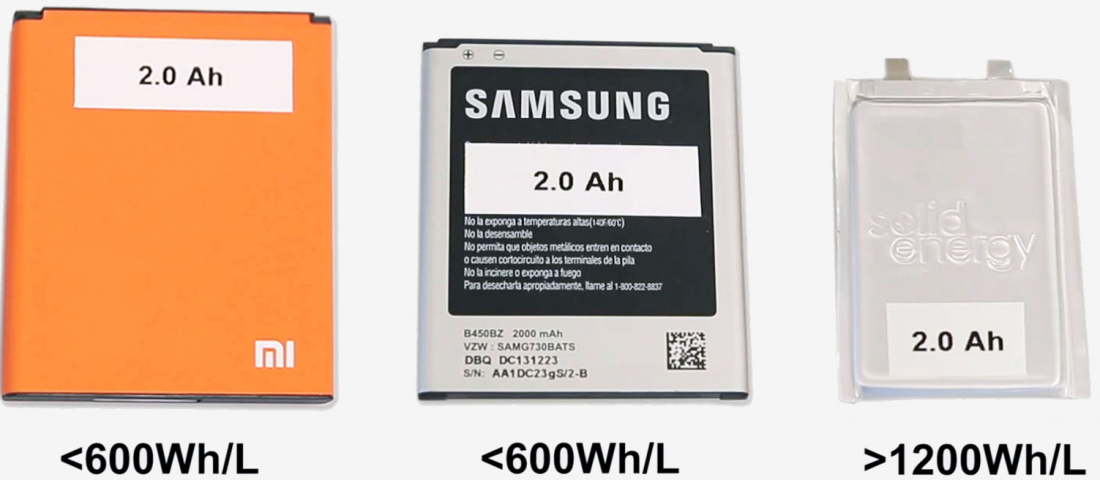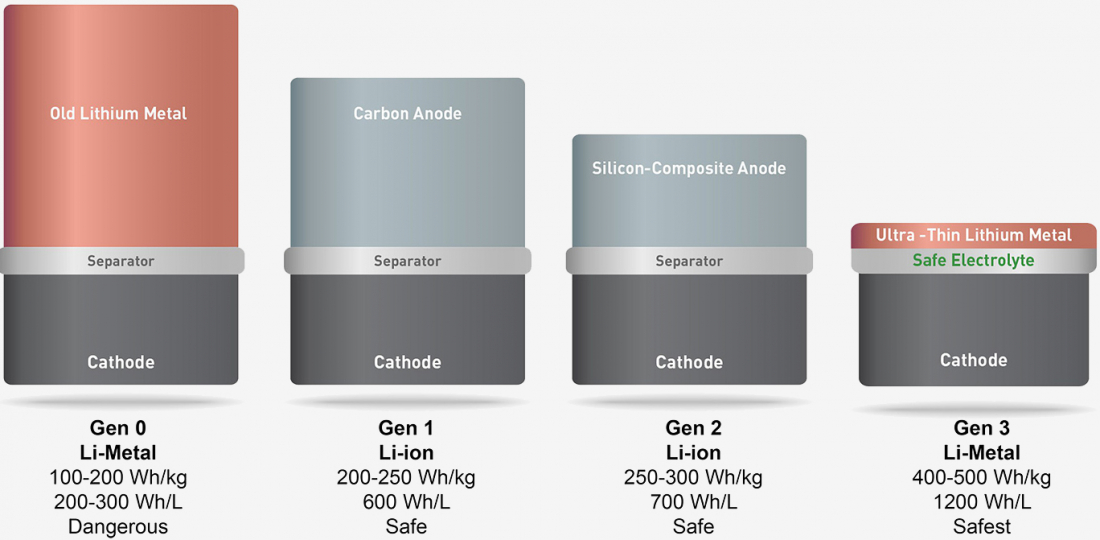Smartphones, drones and electric vehicles may soon be able to last twice as long between charges thanks to a promising battery technology being developed by MIT spinout SolidEnergy Systems.
Led by MIT alumni Qichao Hu, researchers have developed a battery that swaps out the common battery anode material for a very thin, high-energy lithium-metal foil that's capable of holding more ions.
The problem with this approach, however, is that lithium metal reacts poorly with a battery's electrolyte (the liquid that conducts ions between the cathode (positive electrode) and the anode (negative electrode). The result of their reaction is increased resistance, reduced life cycle and the risk of short circuits created by dendrites.
The solution to this and minimum heat requirements (the battery would only work at 80 degrees Celsius or higher) was to coat the lithium metal foil in a liquid hybrid electrolyte solution that eliminates the temperature constraint. Chemical modifications to the separator and cell design further curb negative reactions with the lithium metal.

In layman's terms, all you really need to know is that batteries from SolidEnergy have two times the energy density. This means that batteries can be shrunk down by 50 percent and still offer the same level of performance compared to today's batteries. Conversely, batteries could stay the same and simply last twice as long.
SolidEnergy aims to bring its technology to market later this year with batteries for drones before turning its attention to the mobile and wearable industry early next year. Come 2018, the company plans to set its sights on the electric vehicle industry with the vision of an EV packing a range of well over 500 miles of range between charges.
While it's easy to get excited about SolidEnergy's plans, "holy grail" breakthroughs like this aren't uncommon and sadly, most never make it out of the lab. With any luck, SolidEnergy will succeed where most before it have failed.
